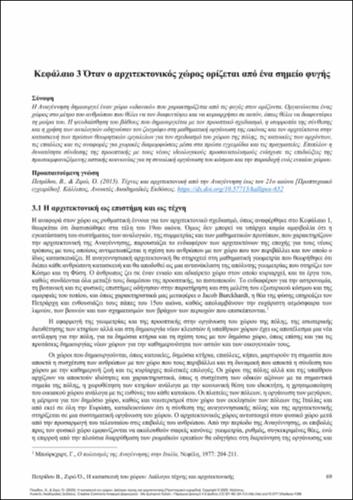| Title Details: | |
|
When architectural space is defined by a vanishing point |
|
| Authors: |
Petridou, Vassiliki Ziro, Olga |
| Keywords: |
The space of the city
Pure spaces in architecture Public buildings Markets Gardens and squares Architectural treatises of the 15th and 16th centuries, Maps and the depiction of cities |
| Description: | |
| Abstract: |
The Renaissance created an "ideal" space defined by vistas that recede toward the horizon. This space was organized to human scale, reflecting mankind’s desire to master and control both the environment and destiny. The illusion of depth achieved through perspective, combined with compositional balance and proportional harmony, guided painters toward the mathematical organization of the image. Simultaneously, architects developed the first theoretical frameworks for designing urban space, including city layouts, noble residences, and mansions, as well as spatial configurations documented in early manuals and treatises. Moreover, the alignment of perspective with emerging ideological currents reinforced the ambitions of an ascending urban society to impose order on the world and embrace the concept of a unified, singular space.
|
| Linguistic Editors: |
Konachos, Dimitrios |
| Technical Editors: |
Konachos, Dimitrios |
| Graphic Editors: |
Kaitsa, Elena - Natassa |
| Type: |
Chapter |
| Creation Date: | 31-07-2025 |
| Item Details: | |
| License: |
Attribution - NonCommercial - ShareAlike 4.0 International (CC BY-NC-SA 4.0) |
| Handle | http://hdl.handle.net/11419/15032 |
| Bibliographic Reference: | Petridou, V., & Ziro, O. (2025). When architectural space is defined by a vanishing point [Chapter]. In Petridou, V., & Ziro, O. 2025. The construction of space: dialogues between art and architecture [Undergraduate textbook]. Kallipos, Open Academic Editions. https://hdl.handle.net/11419/15032 |
| Language: |
Greek |
| Is Part of: |
The construction of space: dialogues between art and architecture |
| Publication Origin: |
Kallipos, Open Academic Editions |

